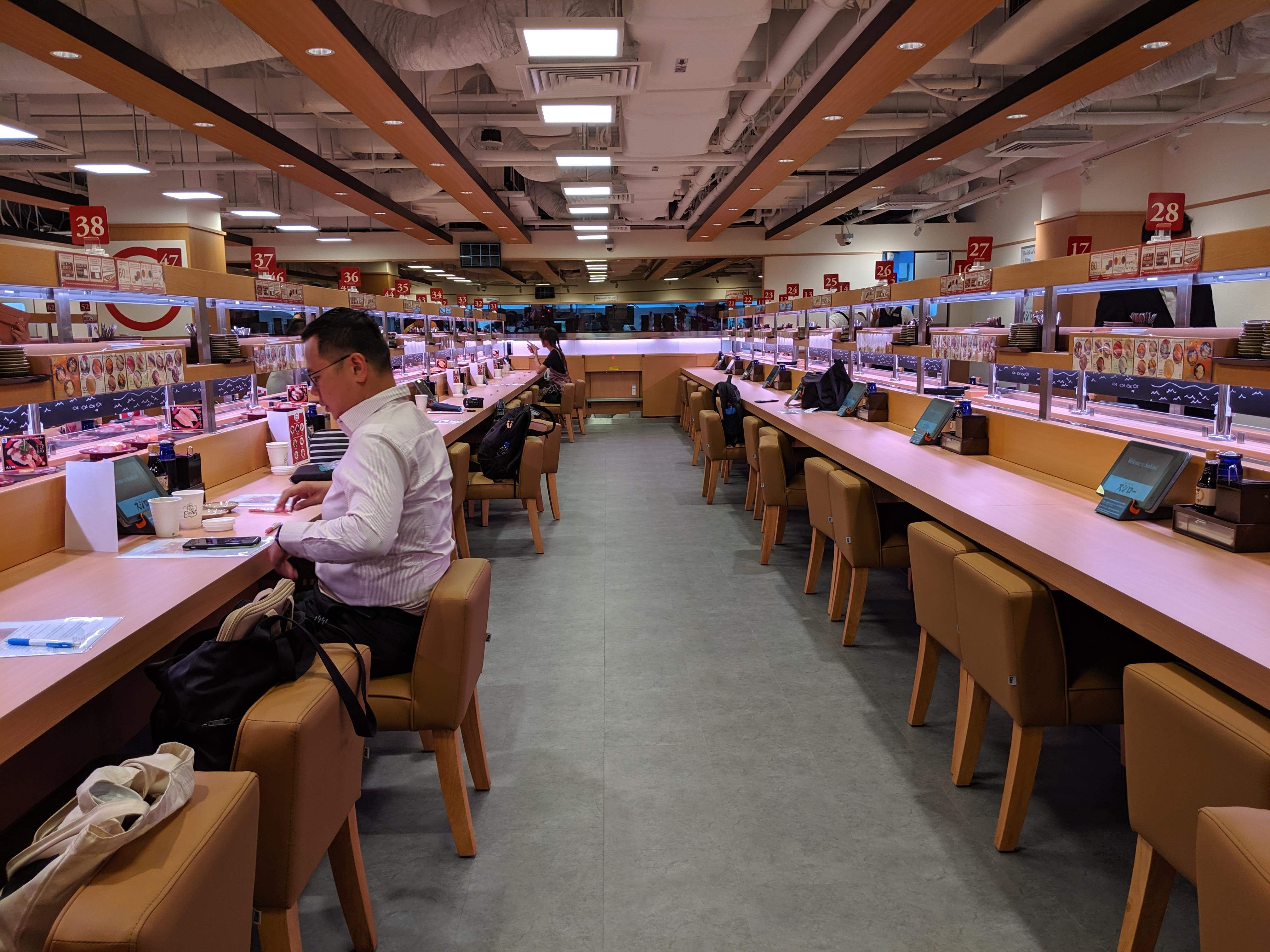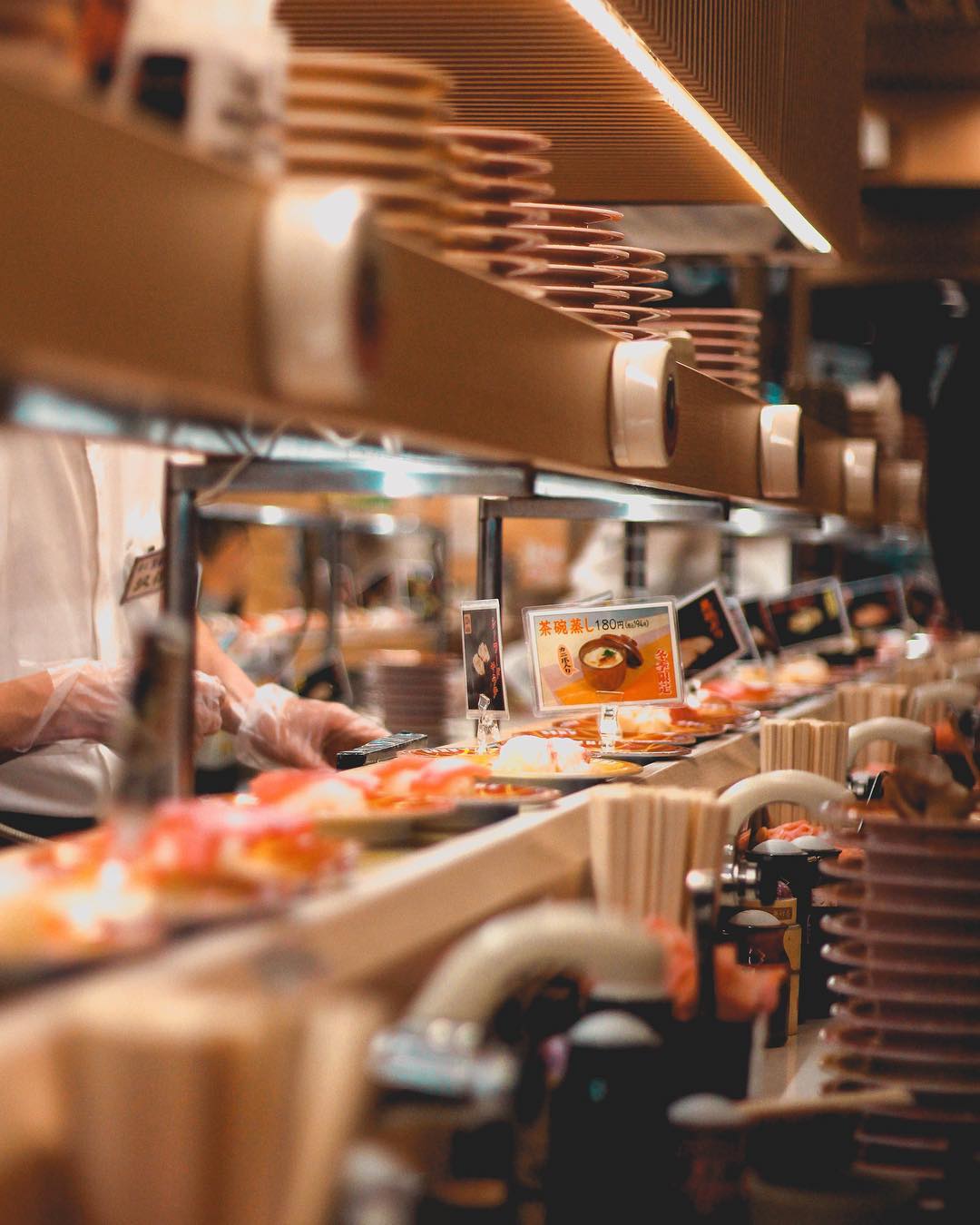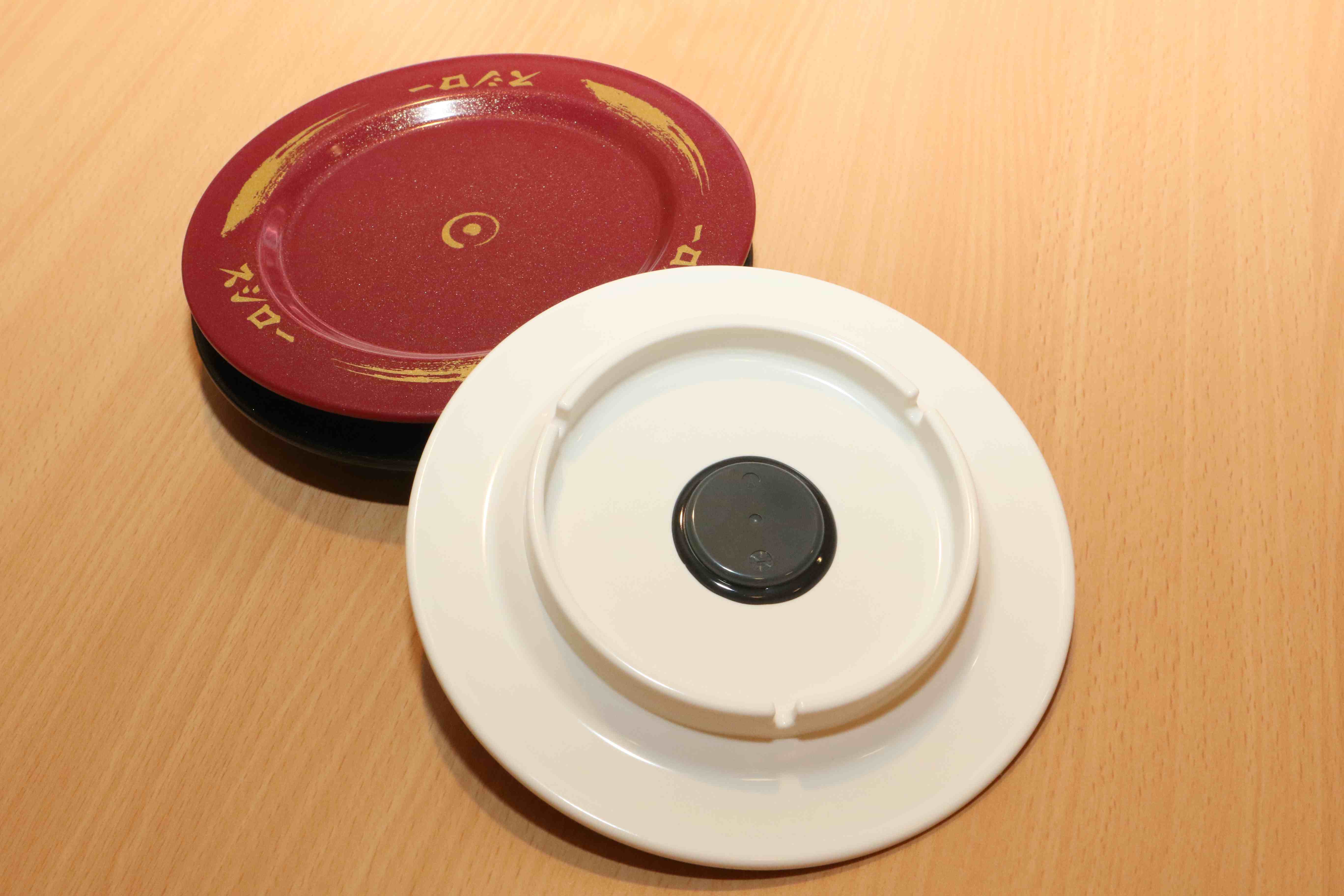“It’s amazing how you can speak right to my heart,” I sang as I took a small plate of succulent mekajiki (swordfish belly) off the conveyor-belt that was churning out various kinds of sushi faster than I could stuff myself.
Granted, I’m pretty sure Ronan Keating, who popularised the song in 1999 for the hit movie Notting Hill, wasn’t referring to raw fish on rice (but who could blame him if he was).
This conveyor-belt style of sushi, or kaitenzushi, is a staple of Japanese dining today where patrons will seat along an often-snaking, rotating conveyor belt with small plates of sushi being transported along its entirety.
If kappo and kaiseiki dining rest along the high-end side of Japanese culinary cuisine, kaitenzushi would fall squarely on the opposite end of the spectrum. This form of dining has brought sushi, which was once regarded as a luxurious, decadent, and upper-class culinary experience, to the popular masses to enjoy. The kaiten-style of enjoying sushi is truly a casual, no frills, and fuss-free dining experience that places the focus on how many plates your tummy (and wallet) can take.

With the latest opening of giant Japanese kaitenzushi chain Sushiro in Singapore, we take a look at how kaitenzushi came to be, what it is, and how it’ll look like in the future.
The Past
Compared to centuries-old Japanese culinary traditions, kaitenzushi has a relatively short history, and it all began with one man and his dream to ease his burden of staffing his own small restaurant.
Now, as with almost all Japanese culinary exports, this story begins in epicurean Osaka. In the 1940s and 1950s, Yoshiaki Shiraishi (1914-2001) was running a small eatery but was having trouble managing his restaurant by himself and had a host of staffing issues. He needed to find a more cost-effective way of serving his sushi than merely single man behind the counter.
An inspiration soon came in 1947 from the unlikeliest of places. A trip to an Asahi Brewery was where Shiraishi chanced upon beer bottles winding along conveyor belts in the factory’s assembly line. This sparked the idea to bring the concept of conveyor belts as a mode of deliverance to customers in his restaurant.
Shiraishi worked with a machinist to apply the concept of conveyor belts into the sushi trade, and in 1958, he opened Mawaru Genroku, his first kaitenzushi restaurant in Osaka. This proved to be a significant turning point, as for the first time in Japanese culinary history, sushi can be mass-produced and enjoyed by the everyday man.

Mawaru Genrozukushi – Photo by jacqsowhat via Instagram.
This was a marked deviation from aged-old culinary traditions where sushi making was revered and likened to art, taking sushi masters decades to perfect. Shiraishi was never part of this guild of sushi masters and his implementation of kaiten-style dining in sushi turned what was once a luxury dining into an affordable and popular fast food.
The Present
It was in the 1970s that kaitenzushi really underwent a boom in popularity when Shiraishi showcased his kaiten-style restaurant at the Osaka World Expo. Since then, numerous brands have started their own kaitenzuzhi chains and it has proved to be a hit, becoming a mainstay not only in Japan, but around the world.
Today in Singapore, there are a growing number of restaurants serving up their versions of kaitenzushi, from the fan-favourite Genki Sushi trains to cheap plates from Sushi Express and Nihon Mura, all of us have a favourite haunt to go when we want to pile on casual and comforting plates of sushi.
Set in the hipster heartland of Tiong Bahru, Japan’s current leading kaitenzushi brand, Sushiro, has landed on our shores, bringing a new player into the expanding world of Singapore’s kaitenzushi cuisine.
Now, when the biggest establishment of Japanese kaitenzushi makes a move, the culinary world shakes. Okay maybe it doesn’t, but it sure stirs up a media frenzy. Being its first outlet in Southeast Asia, Sushiro is looking to bring its high-quality and large variety of sushi to fill the bellies of Singaporeans. To give you an idea of how huge a conglomerate Sushiro is, this Japanese kaiten chain first opened in 1984 and in a mere 35 years, has over 530 outlets spanning Japan, Korea, and Taiwan, serving over a mindboggling 1.36 billion plates of sushi annually.
That’s a lot of sushi.

Back to Sushiro Singapore, boasting over 100 different varieties of sushi and side menu items, it can get a little overwhelming looking at the plates snake past you on the conveyor belts. You’ll be sure to spot fan-favourites like salmon roe and tuna to bizarre and unique ones like roasted pork with green onions and fried chicken (both on sushi rice mind you).
Part of the draw of Sushiro and kaitenzushi are the affordable prices that come with what many consider premium cuts and types of sushi. Starting from as low as SGD$2.20 per plate, customers can expect prized ingredients like sea urchin and otoro (fatty tuna), some of which are only available through ordering by way of the touchpad in front of you.
The restaurant has said that it imports all its fish and rice from Japan, looking to present as fresh and as synonymous an experience to Sushiro outlets back home.
The Future
If Sushiro’s foray into Singapore, and the larger Southeast Asian market is any indication, kaitenzushi will continue to expand its footprint around the world. The model of casual and affordable fast food chains is one that has proven to be extremely successful, and kaitenzushi has entered the big leagues, batting with fast food giants like McDonald’s and KFC.
In order to stay competitive in today’s foodscape, Sushiro is at the forefront of how kaitenzushi is evolving with technology. Conveyor belts are now extremely streamlined with tablets at almost every seat, giving patrons easy access to order sushi and side menu items that will arrive by way of an express track, zooming out directly from the kitchen instead of the plates that are languishing on the conveyor track.

And even that is changing, Sushiro has a chip attached under each plate which allows the kitchen to monitor the time the dish has been making the rounds, removing the dishes after certain durations to ensure freshness of the food that are on the belts. It is also through this way that the restaurant can track the patrons’ most popular to least favourite sushi.
As the world evolves, so do the people’s taste buds and we get a glimpse of it as more kaitenzushi restaurants are slowly diversifying and introducing varying items such as ramen and rice bowls that are not typical of the kaitenzushi restaurant of old.
You can see the nature of kaitenzushi slowly morphing as time progresses, with some saying that it is straying away from old tenets, while others echo sentiments of evolving. Perhaps in the future, kaitenzushi will do away with an active rotating conveyor belt and just feature an express track, with all orders done through the touchpad. Will that still be considered kaitenzushi?
If you ask me, at the end of the day, just give me my mekajiki and I’ll be a happy man.
Sushiro
Address
#02-118, Tiong Bahru Plaza Singapore 168732
Tel
6970 2293
Opening Hours
Daily 11 AM to 10 PM
Soft Launch Period (19 Aug to 25 Aug): 11:30 AM to 9 PM





Great article! Enjoyed reading the history of kaitenzushi.